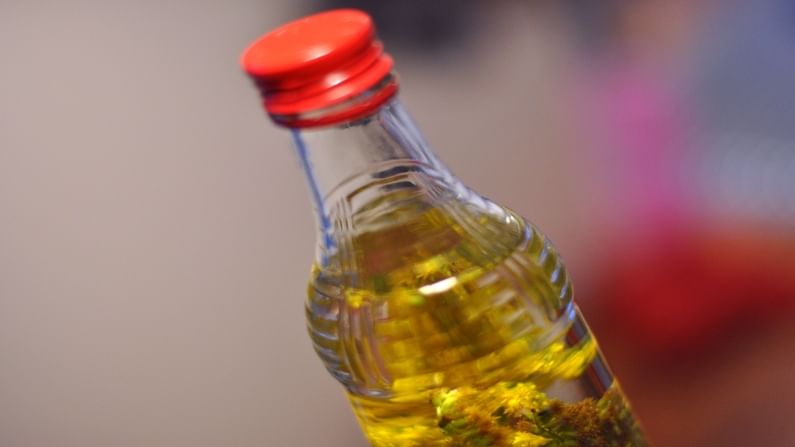Deep fry, poori on backburner: Edible oil price unlikely to dip before end-2021: Experts
The price of all edible oils has risen by 55-70% in the past one year and is expected to dip only during the winter

“We have given up our Sunday breakfast of poori and brinjal fry. The price of mustard oil has risen from Rs 155/litre to about Rs 190/litre between December and June,” said Samir Sarkar, West Bengal government employee who is the sole earning member in a family of four. To save costs, Sarkar switched from branded packaged oils to local oil mills. “This is the hilsa season and sales of mustard oil went up every year around this time. But this year, high prices have kept consumption down, especially at this hour of all-round financial crisis,” said Mahendra, who runs a grocery Amira Stores in Kolkata.
Wait for winter
The woes of Sarkar and Mahendra are unlikely to end soon. Prepare to buy edible oil at elevated prices till the end of this year since there is no realistic chance of prices coming down in the next few months, industry experts told Money9.
The cost of various edible oils has gone up by 55-70% in the past one year and in the past six months by 15-23% stretching kitchen budgets and inflation figures.
In May, during the heights of the second wave of the pandemic, the price of edible oil rose to 10-year highs.
Tariff cut
Worse, despite duty reduction by the central government on import of palm oil, prices of most of the cooking oils have increased by about 7-8 per cent in the last two weeks in July.
Industry insiders said that cooking oil prices might stabilise and consolidate around the current levels in August, however ruled out any reduction before winter.
“There is little chance of prices coming down before November-December when the crops of the farmers in Malaysia and Indonesia are harvested and sunflower farmers in Ukraine and Russia,” said an industry veteran on condition of anonymity.
Canalise through Nepal, Bangladesh
Sudhakar Desai, president of the Indian Vegetable Oil Producers’ Association (IVPA), told Money9 that IVPA has suggested to the government that in order to reduce prices for the benefit of the common man, cheaper goods from Nepal and Bangladesh can be imported through designated agencies and these can be sold through the public distribution system.
Also Read: Rising prices: Cooking oil burning a hole in the pocket
Nepal and Bangladesh enjoy duty free exports to India and the government can take advantage of cheaper imports from these two countries to tide over the crisis at hand.
“It would help bring down the prices and prevent impacting the interest of the Indian refining industry players,” he said.
Double oil shock
Significantly, in October 2019, BV Mehta, executive director, Solvent Extractors Association of India (SEA) had urged the prime minister and Union finance minister to take action against duty-free imports of edible oils to India from Nepal and Bangladesh since they were harming the interest of the domestic producers.
Over the past several months, India is passing through a season of double oil shocks with edible oils joining petrol-diesel prices to pin down the poor and middle class in a pincer attack that is stoking all-round price rise even when the pandemic has triggered record job losses, wage cuts and ruined small businesses.
According to Desai, the Indian edible oil market is about Rs 1 lakh crore with 20-30 major players.
Balancing game
To rein in the price of refined edible oils, the government can do two things. One, allow imports from Nepal and Bangladesh which will attract no import tariff. Two, it can reduce import duty further.
“The import duty of palm oil has been reduced from 35% to 30%. If the government wants to, it can reduce it further. Reduction or increase of import duty is always a balancing game,” said Desai.
“The price of crude palm oil in Mumbai has increased 4.61% in a week, 9.66% in a month and by close to 72% from a year ago. The retail prices of cooking oils have nearly doubled in the domestic market,” observed the Centre for Monitoring Indian Economy on July 21.
Dynamic rate suggested
For a permanent approach to such a situation, IVPA has suggested to the government that it should switch to a dynamic slab tariff regime.
The mechanism should be such that tariffs should keep adjusting according to the situation. “It’s a complicated structure that takes into account international exchange prices as benchmark prices,” said an official with knowledge of the development.
Conflicting interest
Predictably, the interest of the domestic manufacturers and consumers are in conflict. While the consumers are interested in just a reduction, the manufacturers apprehend that the reduction in import duty would affect their interest by cheap imports flooding the country.
According to SEA data, the average landed price of crude palm oil in India was $1,173/tonne in April 2021 compared to $599 in April 2020. Domestic soy oil prices more than doubled.
The big four
The cooking oils consumed in India mostly are palm oil, sunflower oil, groundnut oil and mustard oil.
According to retail markets, the price rise was in the following range — groundnut oil by more than 20%, mustard oil rose by more than 50%, sunflower oil more than 60% and palm oil rose by at the same rate.
In edible oil, India suffers from a demand supply gap just like crude oil — the country is overtly dependent on imports to meet the gap.
India imports about 1.5 crore tonne of edible oil annually and the domestic production is only 0.75-0.85 crore tonne. Whenever global prices jump, as in the present situation, Indian consumers suffer.